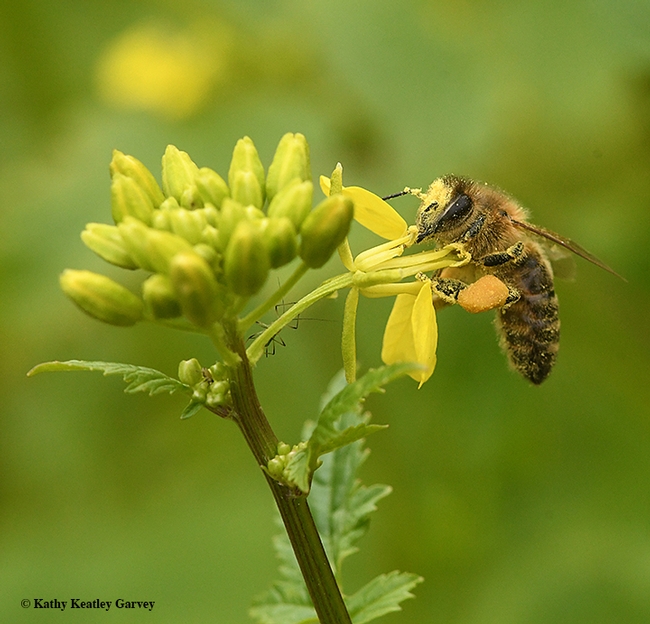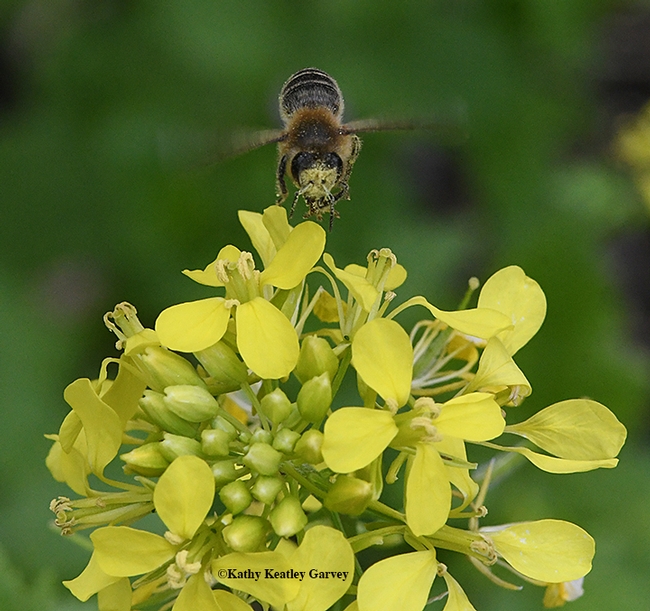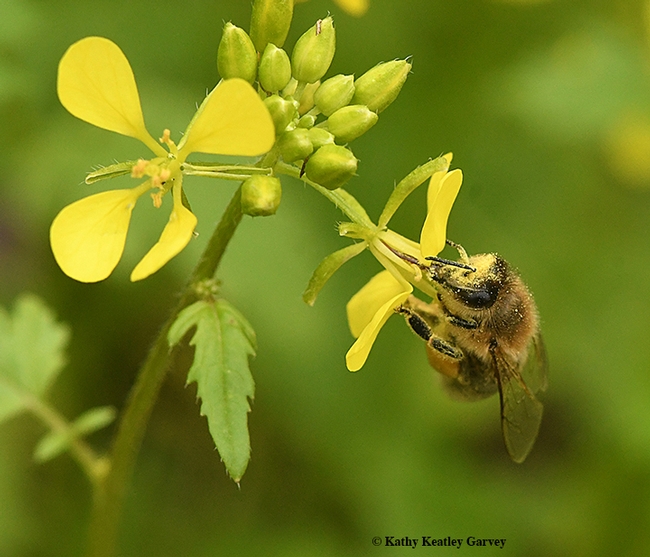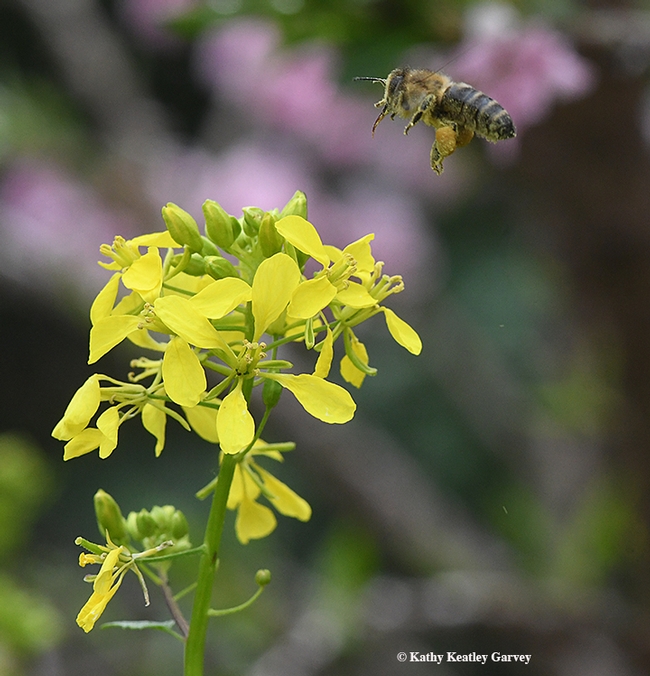A sure sign of spring: honey bees foraging on mustard.
You'll see mustard growing as cover crops in the Napa Valley and Sonoma Valley vineyards, but you'll also see it gracing the hillsides, roadways and area gardens.
It's a time when the yellow pollen dusts the bees from head to thorax to abdomen. Sometimes you'll see a bee's head absolutely covered with the "gold dust."
According to this Sonoma County website:
"Whether it's growing wild or planted by thoughtful vineyard managers, mustard is more than just a feast for the eyes, it's a feast for the vines. It thrives just until bud break, when it is turned under to mulch and provide valuable nutrients and phosphorus to the emerging grape plants."
"The practice holds deep roots in Wine Country. According to legend, a Franciscan missionary first spread the mustard seed while landscaping church properties throughout California. Planting was simple – these early world gardeners carried the mustard seeds in a sack slung over their backs, and each sack had a small hole in it, so as they walked, the seeds would scatter."
Indeed, mustard is not only a feast for the eyes. The mustard plant, from the family Brassicaceae, provides us with
- Spices
- The condiment known as mustard (seeds are ground and mixed with water, vinegar and other ingredients); and
- Mustard greens (the leaves are edible and perfect for a salad).
And it's a feast for bees!
Attached Images:

A honey bee foraging on mustard on Sunday, March 18 in Vacaville, Calif. (Photo by Kathy Keatley Garvey)

Full speed ahead: "gold dust" or mustard pollen covers the head of this honey bee. (Photo by Kathy Keatley Garvey)

Look closely and you can see the proboscis (tongue) of this honey bee. (Photo by Kathy Keatley Garvey)

And she's off! A honey bee caught in flight as she leaves a mustard blossom. (Photo by Kathy Keatley Garvey)